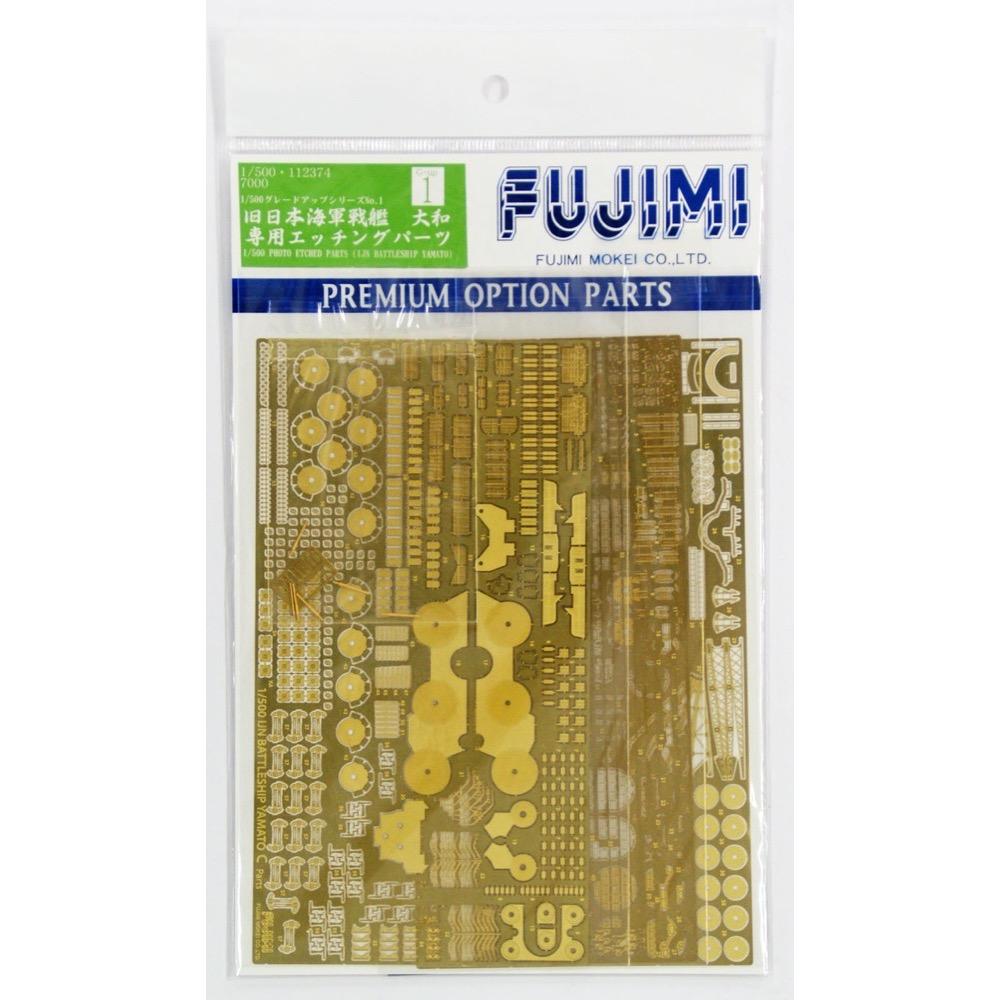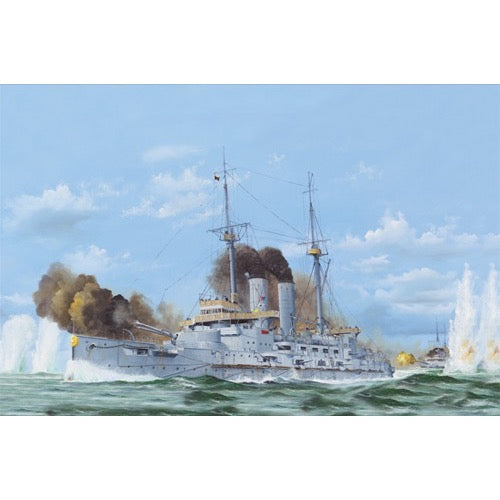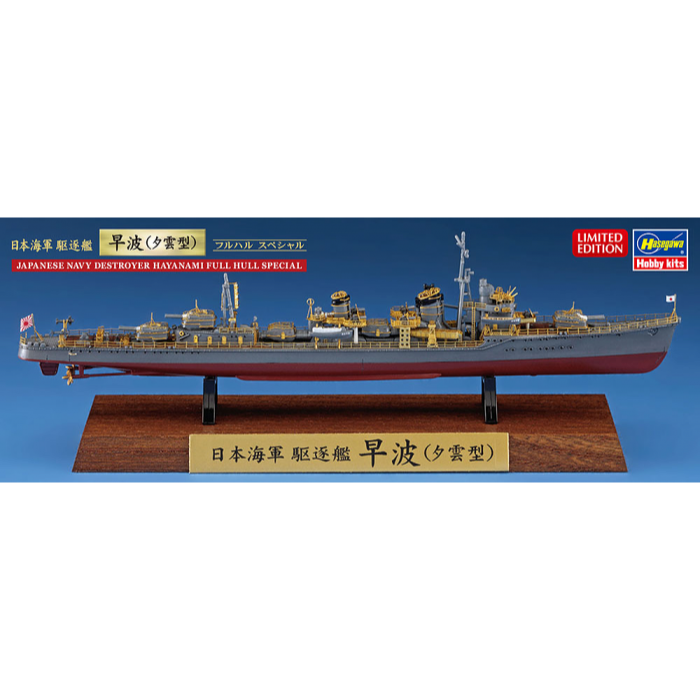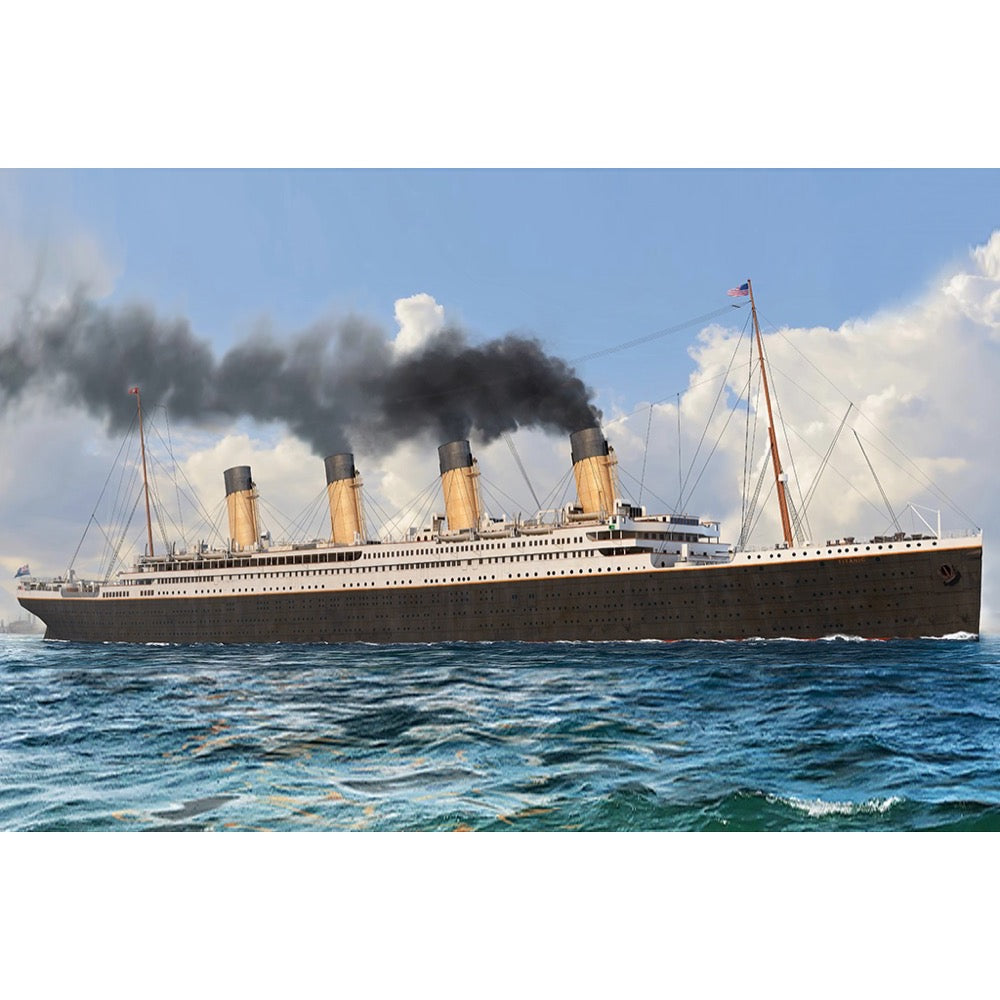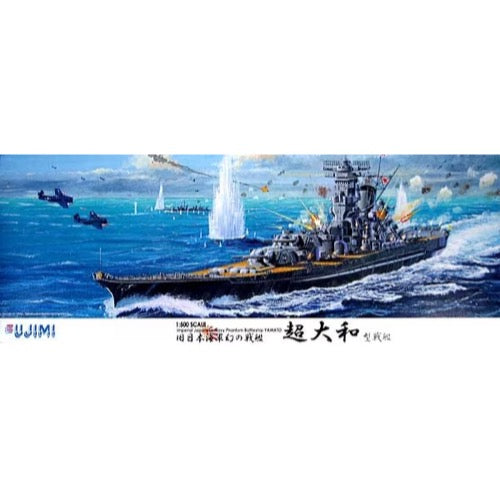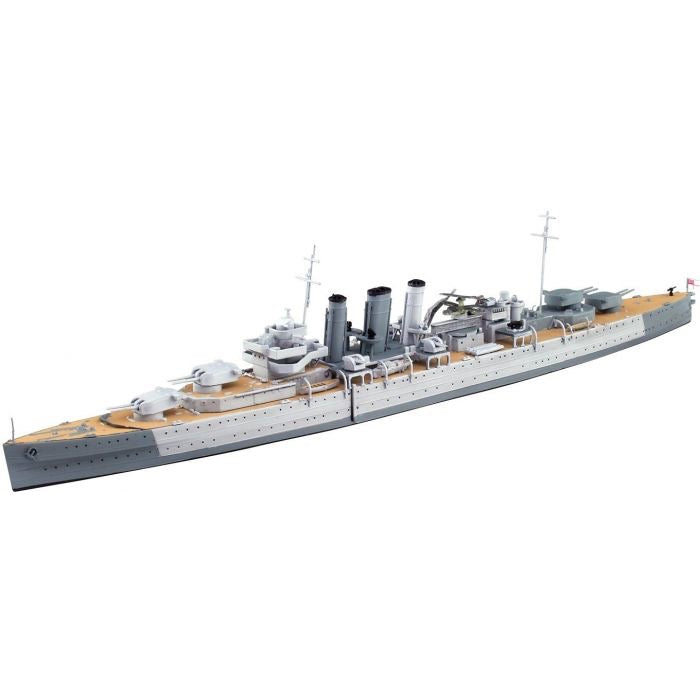
Aoshima A005266 1/700 HMS Dorsetshire Indian Ocean
Aoshima brings us an all-new 1/700-scale kit of the HMS Dorsetshire, torpedoer of the mighty Bismarck. The British heavy cruiser met her own end in the Imperial Navy's 1942 Indian Ocean raid, commemorated in this kit with a display stand and a model of the 99-type naval bomb that sank her.
This is an injection-plastic ship model kit.
Includes
- Decals
Mold Color
- Gray, tan, clear, black
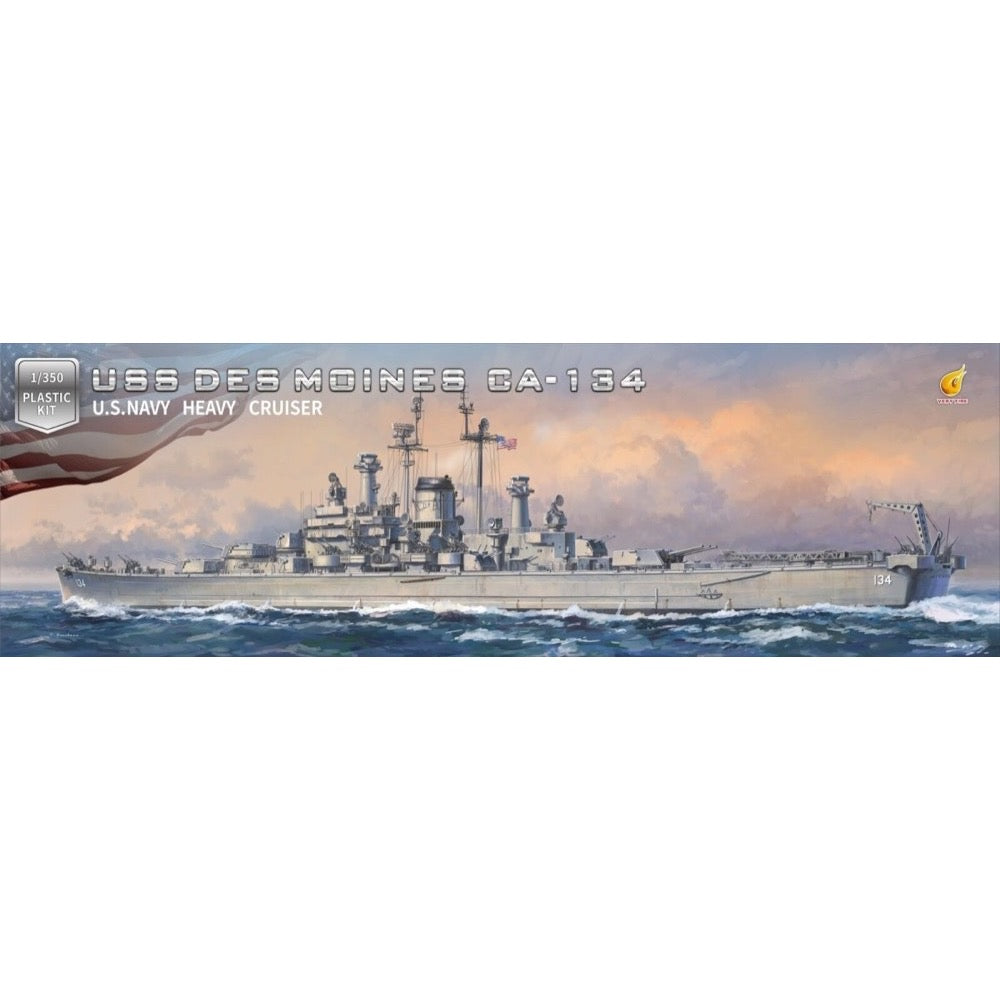
Very Fire VF350918DX 1/350 USS Des Moines CA-134 DX Deluxe Version
USS Des Moines (CA-134) - one of the three American Des Moines-class heavy cruisers, which entered service after the end of World War II. They were the last American cruisers armed only with muzzle artillery.
The cruiser was launched on September 27, 1946 at the Fore River Shipyard of Bethlehem Steel Corporation in Quincy, Massachusetts, and commissioned on November 16, 1948, into the US Navy. The first commander of the ship was Commander AD Chandler. Between 1949 and 1957, she served in the Mediterranean every year as the flagship of the 6th Fleet. In 1952 and also from 1954 to 1957, she made training cruises calling at the ports of Northern Europe. In 1952, 1953 and 1955, the cruiser participated in NATO fleet maneuvers. She was last flagship of the 6th Fleet between February 1958 and June 1961. On July 14, 1961, the cruiser was placed in reserve, moored in Philadelphia, and preserved. In 2006, the ship was towed to Brownsville, Texas, where it was scrapped.
USS Des Moines (CA-134) was the lead ship of the class of United States Navy heavy cruisers. She was the first ship in the United States Navy to feature the auto loading Mark 16 8-inch/55 caliber gun, the first of its type in the world, and the second ship of its name in the U.S. Navy.Des Moines was launched 27 September 1946 by Bethlehem Steel Company, Fore River Shipyard, Quincy, Massachusetts; sponsored by Mrs. E. T. Meredith, Jr.; and commissioned 16 November 1948, Captain A. D. Chandler in command. She became the first of her class to mount the semi-automatic Mark 16 8-inch turrets [1] and carry the new Sikorsky HO3S-1 utility helicopters in place of seaplanes. She was named after the capital of the state of Iowa.In a varied operating schedule designed to maintain the readiness of the Navy to meet the constant demands of defense and foreign policy, Des Moines cruised from her home port at Newport, Rhode Island and after 1950, from Norfolk, Virginia on exercises of every type in the Caribbean, along the East Coast, in the Mediterranean Sea, and in North Atlantic waters. Annually between 1949 and 1957 she deployed to the Mediterranean, during the first seven years serving as flagship for the 6th Task Fleet (known as the 6th Fleet from 1950). In 1952, and each year from 1954 to 1957, she carried midshipmen for summer training cruises, crossing to Northern European ports on the first four cruises. She also sailed to Northern Europe on NATO exercises in 1952, 1953, and 1955. On 18 February 1958, she cleared Norfolk for the Mediterranean once more, this time to remain as flagship for the 6th Fleet until July 1961 when was placed out of commission in reserve.
Through her Mediterranean services Des Moines contributed significantly to the success of the 6th Fleet in representing American power and interests in the countries of Southern Europe, Northern Africa, and the Near East. She made this contribution through such activities as her participation in NATO Mediterranean exercises; her call to seldom-visited Rijeka, Yugoslavia, in December 1950 and Dubrovnik, Yugoslavia, in May 1960, and to many other ports as a regular feature of her schedule; her cruising in the eastern Atlantic during the wake of the Suez Crisis of 1956; and service on patrol and as control center for American forces in the Lebanon crisis of 1958. Film footage of her cruising with other ships of the United States 6th Fleet was used in the introduction and conclusion of the movie John Paul Jones, starring Robert Stack (Warner Brothers 1959).
Features
-
This kit is a fully new-tooled, deluxe edition kit of the USS Des Moines. It includes a full detail set with wooden decks, PE frets, brass gun barrels, resin parts and more.
-
This is the deluxe version of this model kit includes many extra parts to enable super-detailing this model.
-
This finely detailed plastic model kit requires assembly and painting.
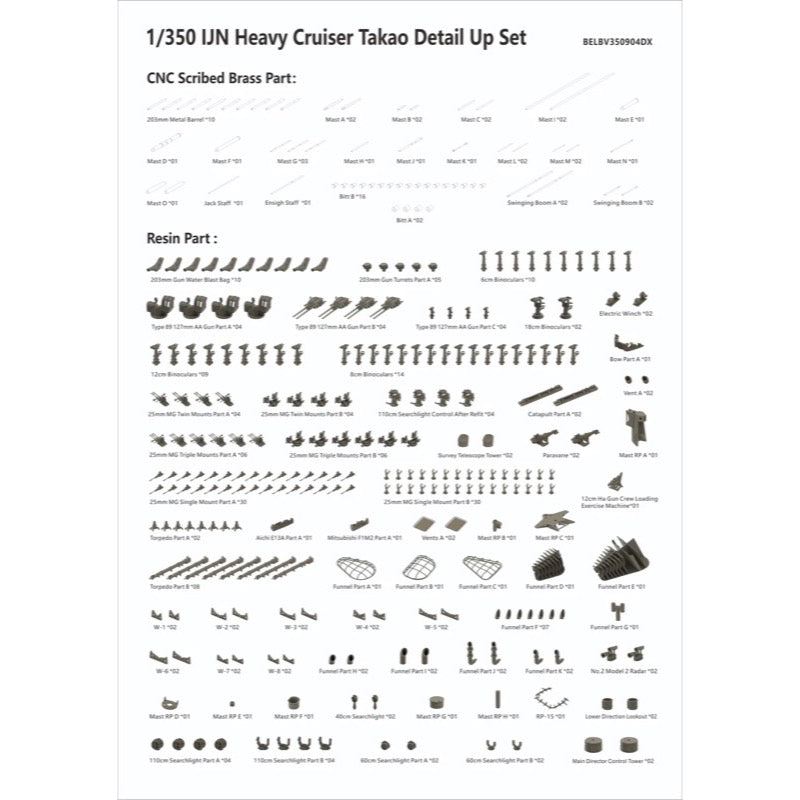
Very Fire BELBV350904UP 1/350 IJN Takao Detail Up Set

Aoshima A004541 1/700 I.J.N. Light Cruiser Katori
Katori was a Japanese light cruiser whose keel was laid in 1938, launched in June 1939, and commissioned in the Imperial Japanese Navy in April 1940. The length of the ship was 130 m, width 15.9 m, and a full displacement - 7,100 tons. The maximum speed of the cruiser Katori was only 18 knots. The main armament was 4 140 mm guns in two turrets with two cannons each, and the additional weapons were, among others: two 127 mm guns and two twin 533 mm torpedo tubes.
Katori was the first cruiser of the type to bear the same name - that is, Katori. Originally, at the time of ordering, these types of units were planned as training ships, but during the Pacific War, they were adapted as light cruisers and performed various auxiliary functions in the Japanese fleet. The career of cruiser Katori during World War II began as the flagship of Vice Admiral Mitsumi Shimizu, who commanded Japanese submarines in the attack on Pearl Harbor in December 1941. In February 1942, the ship was severely damaged in an attack by American on-board planes near Kwajalein Island, and she sailed to Japan for repair. He returned to active service in the same year - 1942 -. In February 1944, Katori fought the American landing on the island of Truk, during which she was sunk by the battleship USS Iowa on February 19, 1944.
This detailed kit of the IJN light cruiser Katori builds into a waterline model. Represents the early war configuration, with simplified masts, torpedo tubes, and less anti-aircraft armament.
This is an injection-plastic ship model kit.
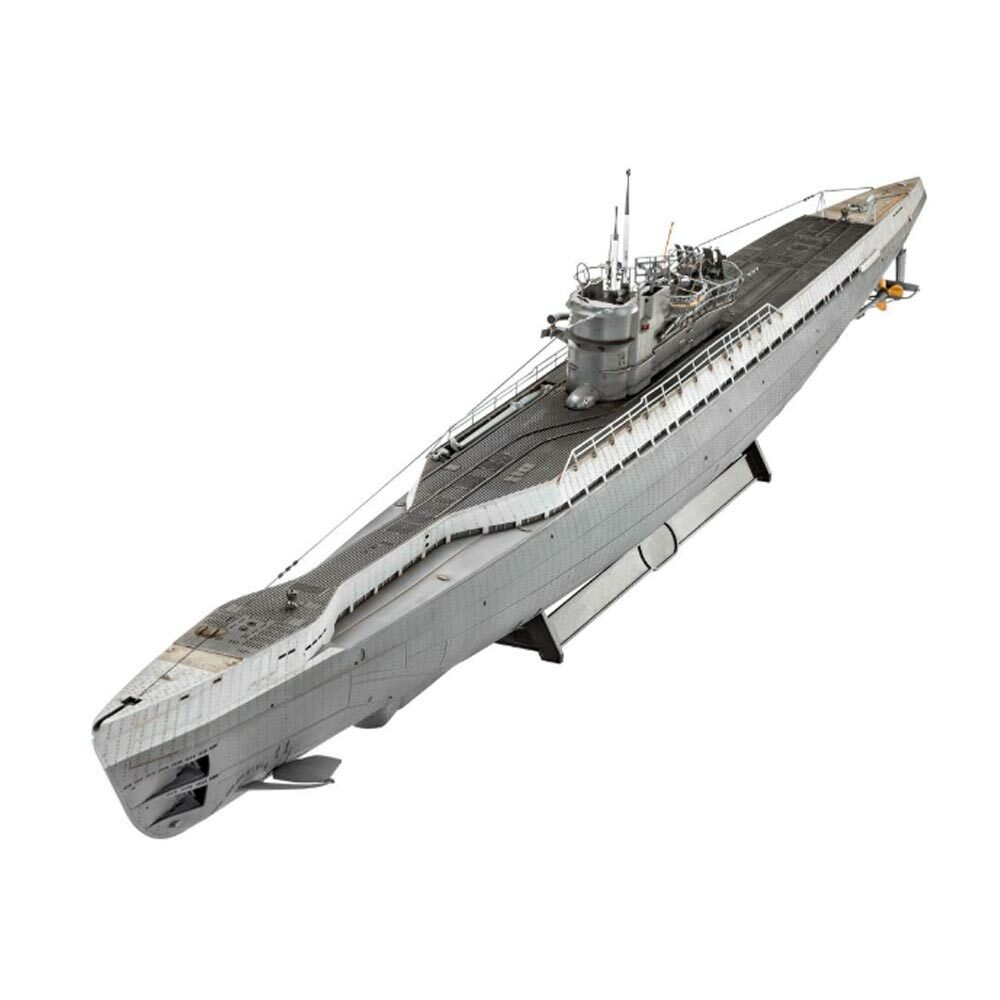
Revell 05167 1/144 German Submarine Type IX C/40 U190
Dive into history: your masterpiece - your German Submarine Type IX C/40 (U190) 1:144 scale model kit!
Bring the fascinating world of submarines to life with our exquisite 1/144 scale German Submarine Type IX C/40 (U190) model kit! This masterpiece of model making allows you to explore and recreate the legendary Type IX C-class submarine in all its detail. With a diving depth of 250 meters and an amazing range of 13,850 nautical miles (for the Type IX C/40), this submarine was a true giant of the seas.
This model kit is suitable for budding modelers aged 12 and up, and for anyone with a penchant for history, engineering and maritime adventure. Whether you're a beginner or experienced modeler, this set will allow you to expand your skills and create an impressive showpiece for your collection, display, or play.
Features
- 115 highly detailed plastic parts for a realistic finish
- Pictured, multilingual assembly instructions for effortless assembly
- Decals for the perfect finish
- Innovative quick-dive device and snorkel for authentic functionality
- Late model with large conservatory for distinctive detail
Contents
- Plastic model kit (unassembled, illustrated, multilingual building instructions, decals
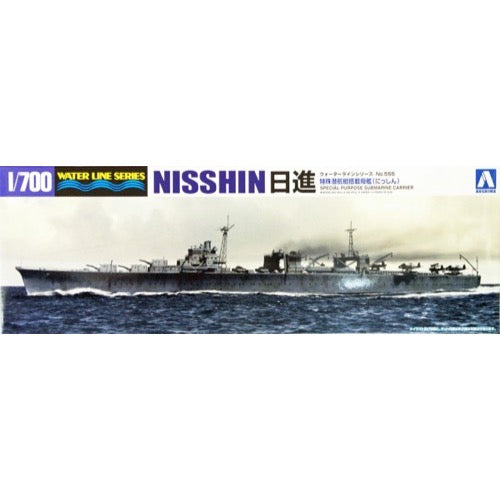
Aoshima A000844 1/700 IJN Sub Carriers Nissihin
Nisshin was initally developed as a seaplane carrier/high speed minelayer, but later motifications were made for the ship to carry Type 'A' midget submarines. It was equipped with 3 14cm twin guns and large Type 1-2 Model 11 catapult, usually operated as a fast transport. The ship was launched on 27th February 1942. On one of the transport missions, Nisshin was sunk on 22 July 1943 in the Bougainville Strait by an American B-24.
Get ready to recreate this historic vessel with this detailed model kit. Molded in gray, this kit includes decals for added authenticity. Perfect for history buffs and model enthusiasts alike!
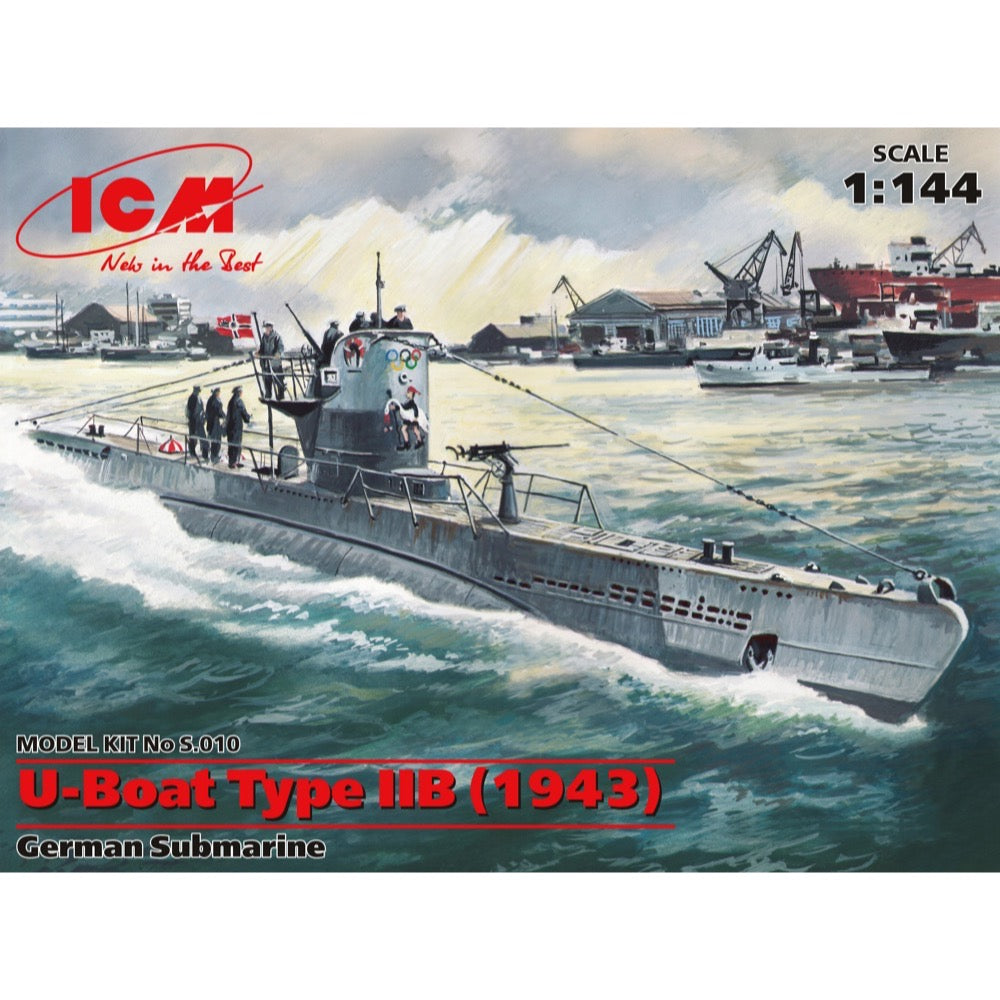
ICM S010 1/144 U-Boat Type IIB 1943
U-Boat Type IIB (1943)
German Submarine
The coastal Type II U-Boats were became the first vessels of this class, that were built in Germany after the end of WWI. The improved IIВ series submarines were built in Deutsche Werke (U13-U16) and Germania Werft in Kiel (U7-U12, U17-U24). They all were included to the Kriegsmarine in 1935-1936. Two flotillas were formed with those vessels – the 1st Weddigen and 3d Lohs.
With the beginning of WWII the Type II U-Boats were in active use as mine-layers in ports and river estuaries of England and Scotland Eastern Coast, and also for anti-shipping struggle in the English Channel area.
In the end of 1942 six Type IIB U-Boats (U 9, U 18, U 19, U 20, U 23, U 24) were transferred to the Black Sea. They were used there up to September 1944.


